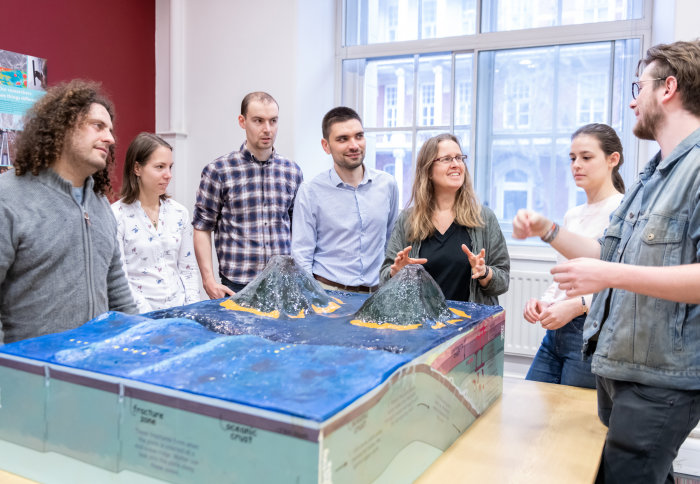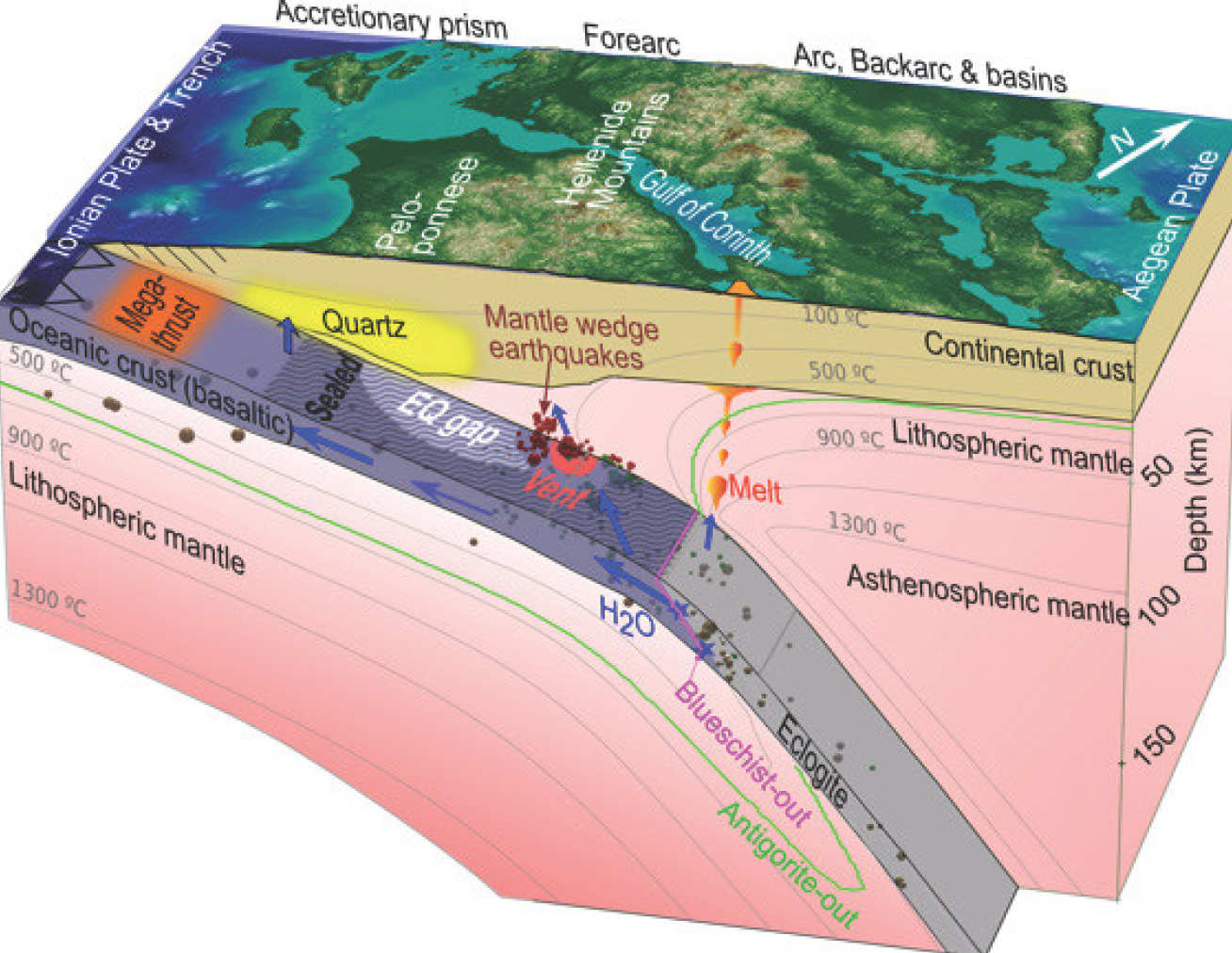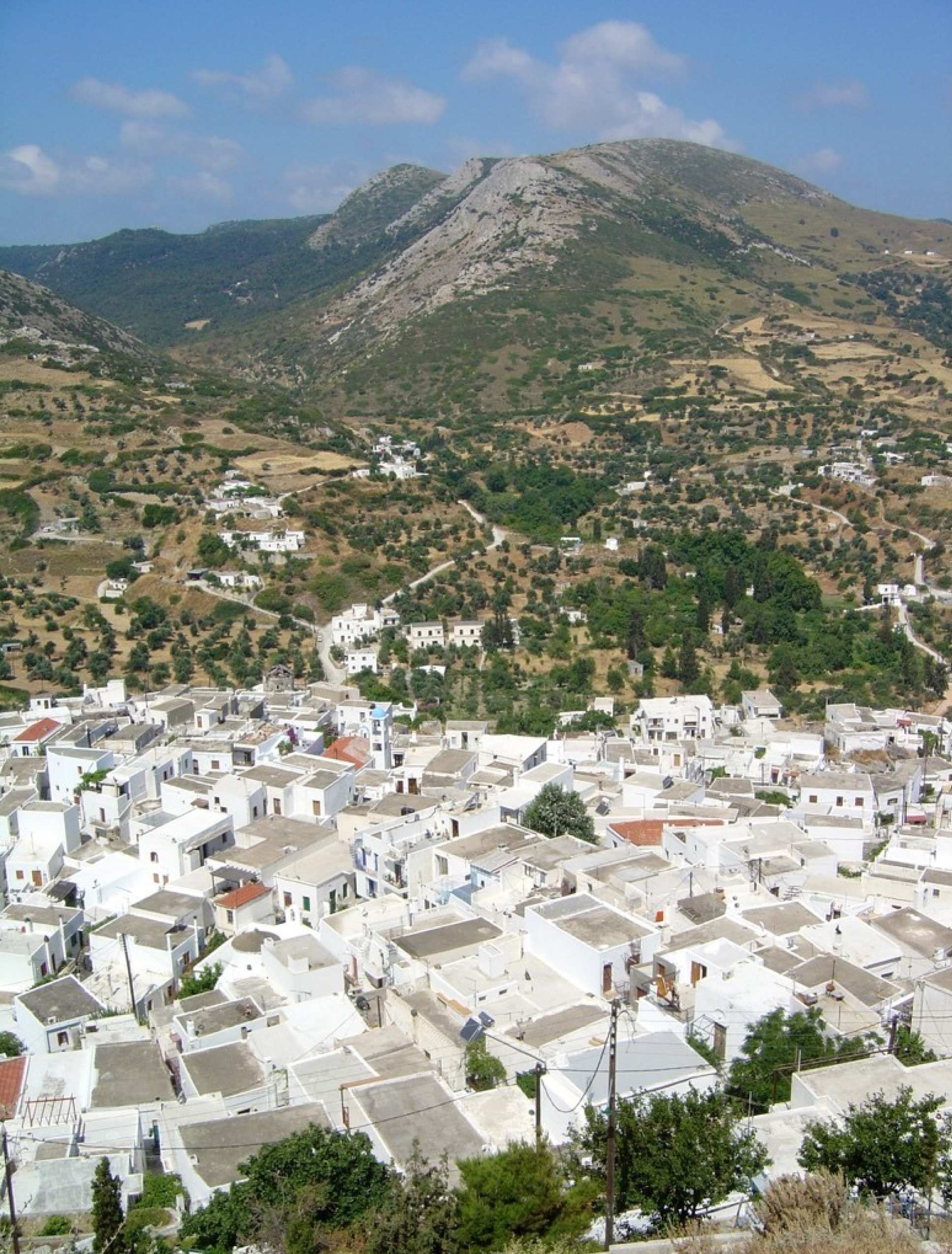
Dr Saskia Goes discussing subduction with her research group

A team of researchers has discovered that we can use earthquakes to trace part of the deep earth water cycle.
By studying deep earthquakes under Greece, researchers from Imperial, with colleagues, found some earthquakes were located in unexpected locations. When a tectonic plate plunges into Earth’s hot mantle, it heats up and deforms and the descending plate’s rocks undergo chemical reactions that release water and transform the rock’s minerals. Here, earthquakes were found not in the cold downgoing plate, or along the contact between the two plates, but above the subducting plate in the mantle wedge corner between the two plates where rocks are expected to be relative hot and ductile.
The researchers began to study how fluids released from the subducting plate might control where earthquakes occur, at this surprisingly deep location.

The deep Earth water cycle takes water from the surface into the deep Earth where it can be stored for many millions of years until it is brought back up by mantle convection.
The results of the team’s research, published in Science Advances, imply that we can trace the deep earth water cycle by locating small earthquakes, which show where fluids are released from the subducting plate and how they travel upwards and trigger earthquakes under conditions where they would not usually happen. The fluid migration paths found may also give us insight in where larger earthquakes between the two plates might be expected.
Simulating Surprising Earthquakes
“We wanted to learn where and how earthquakes occur within the descending plate”, says Dr Saskia Goes, Imperial College London. To find out, researchers from the University of Bergen deployed instruments across western Greece to record earthquakes, and University of Bergen PhD student Felix Halpaap mapped the descending plate and located the earthquakes.
At Imperial, then PhD student Alexander Perrin and UROP student Robert Shaw ran computer simulations that show how the plate heats up, and where it releases water below Greece. The Bergen and Imperial teams then compared the earthquakes with the model conditions and could infer that the earthquakes occur where fluids released from the subducting plate migrate upwards along the contact between the two plates and then escape into the mantle wedge.

This research provides insight into how the deep earth water cycle works. The release of deep Earth water was crucial in allowing formation of our oceans and early life on Earth. When water is added to mantle rocks it leads to explosive volcanism, like that seen in the Greek island Santorini. It has also been proposed that fluids that are released when one plate slides below another at subduction zones can play a role in triggering large earthquakes (like the devastating earthquake that hit Japan in 2011). We now show clear evidence that indeed water migration in subduction zones is accompanied by, in our case small, earthquakes.
Deep Observations
It is a challenge to link earthquakes to fluid flow deep in the Earth, because we can only obtain indirect observations, with the most detailed observations being from seismic waves generated by earthquakes. These waves allow us to obtain x-ray type images of the Earth’s interior, but with a resolution that is limited by where earthquakes occur and where we can put a seismometer – so we need to make models to understand what these images may mean in terms of pressure and temperature conditions.
 Dr Goes explained that the location of these earthquakes was key in unravelling what controls them. “This location is special because of the unique geometry of the Greek subduction zone. As it has islands above the shallow subduction zone where in most cases there is just deep ocean, we have much better imaging resolution than elsewhere, and this allowed for a detailed comparison with the models, which shows that there is a very close correlation with fluid release.”
Dr Goes explained that the location of these earthquakes was key in unravelling what controls them. “This location is special because of the unique geometry of the Greek subduction zone. As it has islands above the shallow subduction zone where in most cases there is just deep ocean, we have much better imaging resolution than elsewhere, and this allowed for a detailed comparison with the models, which shows that there is a very close correlation with fluid release.”
Article text (excluding photos or graphics) © Imperial College London.
Photos and graphics subject to third party copyright used with permission or © Imperial College London.




